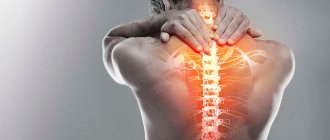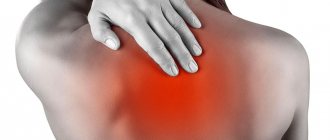Pharmacological properties of the drug Finlepsin retard
Pharmacodynamics . Anticonvulsant, derivative of tricyclic iminostilbene. It has a moderate antidepressant and normothymic effect. The therapeutic effect is primarily due to the inhibition of synaptic transmission of excitation, and thereby reducing the spread of convulsive attacks. At higher concentrations, carbamazepine causes a decrease in post-tetanic potentiation. Reduces pain in trigeminal neuralgia. This effect is due to inhibition of synaptic transmission of stimulation in the spinal nucleus of the trigeminal nerve. Pharmacokinetics. After oral administration, carbamazepine is absorbed slowly and almost completely. The half-life is 8.5 hours and has a wide range (approximately 1.72–12 hours). After a single dose, the maximum concentration of carbamazepine in the blood plasma in adults is achieved after 4-16 hours (very rarely - after 35 hours), in children - after approximately 4-6 hours. The concentration of carbamazepine in the blood plasma is not linearly dependent on the dose and at When used in higher doses, the plasma concentration curve has the appearance of a plateau. When using extended-release tablets, a lower concentration of carbamazepine in the blood plasma is achieved than when using regular tablets. Equilibrium concentration is achieved after 2–8 days. There is no close correlation between the dose of carbamazepine and steady-state plasma concentrations. Regarding the therapeutic and toxic concentrations of carbamazepine in the blood plasma, it is indicated that attacks may disappear when its level in the blood plasma is 4–12 μg/ml. Concentrations of the drug in blood plasma exceeding 20 mcg/ml worsen the picture of the disease. The drug, with a concentration of the active substance in the blood plasma of 5–18 mcg/ml, eliminates pain in trigeminal neuralgia. 70–80% of carbamazepine is bound to plasma proteins. The portion of carbamazepine not bound to proteins remains constant at a concentration of 50 μg/ml. 48–53% of the pharmacologically active metabolite carbamazepine-10, 11-epoxide is bound to plasma proteins. The concentration of carbamazepine in the cerebrospinal fluid is 33% of the concentration in the blood plasma. Carbamazepine crosses the placental barrier and is excreted into breast milk. After taking a single dose, carbamazepine is eliminated from the blood plasma with a half-life of 36 hours. With prolonged treatment, the half-life is reduced by 50% due to the induction of microsomal liver enzymes. In healthy people, the total plasma clearance is approximately 19.8 ml/h/kg body weight, in patients with monotherapy - approximately 54.6 ml/h/kg, in patients with combination treatment - approximately 113.3 ml/h/kg . After a single oral dose of carbamazepine, 72% of the dose in the form of metabolites is excreted from the body by the kidneys. The remaining 28% is excreted along with feces, partially unchanged. Only 2–3% of the substance excreted in the urine is unchanged carbamazepine.
Comparison of the effectiveness of Finlepsin retard and Finlepsin
Finlepsin is more effective than Finlepsin retard - this means that the ability of the drug substance to provide the maximum possible effect is different.
For example, if the therapeutic effect of Finlepsin is more pronounced, then with Finlepsin retard it is impossible to achieve this effect even in large doses.
Also, the speed of therapy is an indicator of the speed of the therapeutic action; Finlepsin and Finlepsin retard are also different, as is bioavailability - the amount of the drug reaching the site of its action in the body. The higher the bioavailability, the less it will be lost during absorption and use by the body.
Indications for use of the drug Finlepsin retard
- epilepsy: partial seizures with elementary symptoms (Jacksonian seizures); partial seizures with complex symptoms (psychomotor seizures); grand mal epileptic seizures, in particular of a focal nature (nocturnal epilepsy, diffuse epilepsy); mixed forms of epilepsy;
- trigeminal neuralgia;
- Genuine glossopharyngeal neuralgia;
- pain from diabetic neuropathy;
- non-epileptic seizures in patients with multiple sclerosis, such as trigeminal neuralgia, tonic seizures, paroxysmal dysarthria and ataxia, paroxysmal paresthesia and attacks of pain;
- prevention of the development of convulsive attacks during alcohol withdrawal syndrome;
- Prevention of manic-depressive phases when lithium therapy is ineffective, when patients experience rapid phase changes while taking lithium or when lithium use is contraindicated.
Comparison of ease of use of Finlepsin retard and Finlepsin
This includes dose selection taking into account various conditions and frequency of doses. At the same time, it is important not to forget about the release form of the drug; it is also important to take it into account when making an assessment.
The ease of use of Finlepsin retard is approximately the same as Finlepsin. However, they are not convenient enough to use.
The drug ratings were compiled by experienced pharmacists who studied international research. The report is generated automatically.
Last update date: 2020-12-04 13:45:29
Use of the drug Finlepsin retard
Treatment with Finlepsin retard is started carefully, the drug is prescribed in low doses individually for each patient, depending on the type and severity of the disease. The dose is then gradually increased until the most effective maintenance dose is achieved. The optimal dose of the drug for the patient, especially in combination therapy, is determined by its level in the blood plasma. According to accumulated experience, the therapeutic concentration of the drug Finlepsin retard in blood plasma is 4–12 μg/ml. Replacing one antiepileptic drug with Finlepsin retard should be done gradually, reducing the dose of the previously used drug. If possible, the antiepileptic drug is used only for monotherapy. Treatment is carried out under the supervision of a doctor. The generally accepted dose range is 400–1200 mg of Finlepsin retard per day in 1–2 doses. Exceeding the total daily dose of 1200 mg does not make sense. The maximum daily dose should not exceed 1600 mg because higher doses may cause an increase in side effects. In some cases, the dose required for treatment may differ significantly from the recommended initial and maintenance dose (for example, due to accelerated metabolism due to the induction of microsomal liver enzymes or due to drug interactions during combination therapy). Unless otherwise prescribed, follow this indicative regimen for using the drug. Antiepileptic treatment The initial adult dose of 200–400 mg carbamazepine is slowly increased to a maintenance dose of 800–1200 mg carbamazepine. The following dosage regimen is recommended: Adults: initial daily dose - 200-300 mg in the evening, maintenance dose daily - 200-600 mg in the morning, 400-600 mg in the evening. Children aged 6-10 years - initial daily dose - 200 mg in the evening, maintenance dose daily - 200 mg in the morning, 200-400 mg in the evening. Children aged 11-15 years - initial daily dose - 200 mg in the evening, maintenance dose daily - 200-400 mg in the morning, 400-600 mg in the evening. Indication : due to the lack of experience in using the drug in children under 6 years of age, Finlepsin retard delayed release is not prescribed to patients in this age category. The maintenance dose of carbamazepine for children is on average 10–20 mg/kg body weight per day. Trigeminal neuralgia, genuine glossopharyngeal neuralgia The initial dose for adults - 200-400 mg of carbamazepine - is gradually increased until a daily dose of 400-800 mg of carbamazepine is reached, which is taken 1-2 times a day until the pain completely disappears. After this, in some patients, treatment can be continued using the drug at a lower maintenance dose that prevents pain attacks - 400 mg of carbamazepine once a day. For elderly patients, the initial dose of Finlepsin retard is 200 mg of carbamazepine 1 time per day. Pain in diabetic neuropathy The average daily dose is 600 mg of carbamazepine (200 mg in the morning and 400 mg in the evening. In exceptional cases, Finlepsin retard can be prescribed at a dose of 600 mg 2 times a day (corresponding to 1200 mg of carbamazepine). Prevention of the development of convulsive attacks during alcohol withdrawal syndrome The average daily dose is 200 mg in the morning, in the evening 400 mg is prescribed (corresponding to 600 mg of carbamazepine). In severe cases in the first days, the dose can be increased to 600 mg 2 times a day (corresponding to 1200 mg of carbamazepine). Non-epileptic seizures in patients with multiple sclerosis The average daily dose is 200–400 mg 2 times a day (corresponding to 400–800 mg of carbamazepine) .Prevention of manic-depressive states The initial dose, which, as a rule, is also a maintenance dose, is 200–400 mg of carbamazepine per day (take 1 once a day). If necessary, this dose can be increased to 800 mg of carbamazepine 1 time per day. For patients with severe cardiovascular diseases, liver and kidney damage, as well as for the elderly, the drug is prescribed in lower doses. Extended-release tablets have a longitudinal notch and are taken during or after meals with a sufficient amount of liquid (for example, a glass of water). Long-acting tablets can be used after dissolving them in water (in the form of a suspension). The prolonged effect persists even after dissolving the tablet in water. The duration of use depends on the indication and the patient’s individual response to the drug. Treatment for epilepsy takes a long time. The question of transferring the patient to Finlepsin retard, the duration of use and its discontinuation in each particular case is decided by the doctor. In general, the dose of the drug can be reduced or completely stopped treatment no earlier than after 2-3 years of absence of attacks. Therapy is stopped, gradually reducing the dose of the drug over 1–2 years. In this case, in children it is necessary to take into account the increase in body weight. The encephalogram indicators should not deteriorate. In the treatment of neuralgia, the use of the drug Finlepsin retard in a maintenance dose sufficient to eliminate pain for several weeks was effective. By carefully reducing the dose, it is necessary to determine whether spontaneous remission of the symptoms of the disease has occurred. When painful attacks resume, treatment is continued using the previous maintenance dose. The duration of treatment for pain relief in diabetic neuropathy and epileptiform seizures in multiple sclerosis is the same as for neuralgia. Treatment of patients with alcohol withdrawal syndrome with Finlepsin retard is stopped, gradually reducing the dose over 7-10 days. Prevention of manic-depressive phases is long-term. The duration of therapy depends on the case and is determined by the doctor conducting the treatment.
Characteristics of Finlepsin
Finlepsin is an anticonvulsant. Acts on skeletal muscles. It is used to relieve seizures and reduce the likelihood of their occurrence. In addition, the remedy is used for mental disorders if anxiety occurs.
Finlepsin is an anticonvulsant. Acts on skeletal muscles.
Release form: tablets. They are round, convex on both sides. They have a whitish tint. The main active ingredient is carbamazepine. One tablet contains 200 mg of this compound. In addition, the composition also includes auxiliary compounds. Tablets are sold in blisters of 10 pcs. There are up to 5 such plates in a pack.
Carbamazepine is a derivative of dibenzazepine. The substance blocks the effect on sodium channels of the cellular structures of the nervous system, including the brain. Their increased activity is eliminated, impulses are suppressed.
The drug has a therapeutic effect:
- Anticonvulsant. Acts on motor neurons of the human brain. Thanks to this, the medicine helps with seizures due to epilepsy.
- Antipsychotic. Anxiety and nervousness decrease, the depressive mood will not be as pronounced, and aggressiveness of various etiologies disappears. The latter even applies to alcohol addiction and alcohol withdrawal.
- Painkiller. Helps with neuritis, when neurocytes become inflamed. The etiology can be any.
After taking the tablets orally, the active compound gradually and completely enters the general bloodstream. It is evenly distributed throughout the tissues and penetrates into the central parts of the nervous system. The drug breaks down in the liver, forming active and inactive compounds that are excreted from the body in urine and feces. The half-life is up to 1.5 days.
Finlepsin tablets should be taken during or after eating. They cannot be chewed or crushed into powder. It is recommended to drink plenty of water.
The treatment regimen and dosage depend on the disease:
- Epilepsy. In this case, the medication is suitable for monotherapy. At the beginning of treatment, dosages are minimal. For adult patients - 1-2 tablets, i.e. 200-400 mg. As a maintenance amount, the drug is taken from 800 to 1200 mg per day. This daily dose is divided into 2-3 doses. The maximum amount should not be more than 2 g. For children under 5 years of age, the dosage is 100-200 mg, but it can be increased to 400 mg. For a child under 12 years of age - from 200 to 600 mg.
- Neuralgia of the glossopharyngeal nerve. You should start with 200-400 mg and increase to 800 mg.
- Alcohol withdrawal. Treatment is carried out in a hospital setting. The initial dose is 600 mg per day. This amount should be divided into 3 servings, but then the daily dose should be increased to 1200 mg. The use of the drug should be stopped gradually.
- Pain due to neuropathy caused by diabetes. 600 mg per day is allowed. In the most severe cases - up to 1200 mg.
- Epileptic type seizures associated with multiple sclerosis. It is recommended to take 400-800 mg once a day.
- Psychoses. To treat and prevent them, you first need to take 200 mg per day, and then increase the volume to 800 mg.
The duration of therapy is determined by the doctor individually for each patient.
The duration of therapy is determined by the doctor individually for each patient.
Contraindications to the use of the drug Finlepsin retard
- bone marrow damage, suppression of bone marrow function in the patient's medical history;
- AV block;
- known hypersensitivity to carbamazepine, tricyclic antidepressants or other components of the drug;
- acute intermittent porphyria;
- concomitant treatment with an MAO inhibitor;
- concomitant treatment with voriconazole, as it may cause treatment failure;
- children under 6 years of age.
In the following cases, Finlepsin retard should be prescribed only after a thorough study of the potential benefits of using the drug compared to the likely risks:
- any current or past diseases of the hematopoietic system, any reactions from the blood system to other medications in the patient’s history;
- disturbance of sodium metabolism;
- serious functional disorders of the heart, liver and kidneys;
- myotonic dystrophy, since with this disorder there is often a disturbance in cardiac conduction.
Comparison of addiction between Finlepsin retard and Finlepsin
Like safety, addiction also involves many factors that must be considered when evaluating a drug.
So, the totality of the values of such parameters as “o syndrome” in Finlepsin retard is quite similar to the similar values in Finlepsin. Withdrawal syndrome is a pathological condition that occurs after the cessation of intake of addictive or dependent substances into the body. And resistance is understood as initial immunity to a drug; in this it differs from addiction, when immunity to a drug develops over a certain period of time. The presence of resistance can only be stated if an attempt has been made to increase the dose of the drug to the maximum possible. At the same time, in Finlepsin the retard value of the “syndrome” is quite small, however, the same as in Finlepsin.
Side effects of the drug Finlepsin retard
The side effects that were observed occurred more frequently with combination treatment than with monotherapy. Depending on the dose and mainly at the beginning of treatment, certain side effects may occur. In general, they disappear on their own after 8–14 days or after a temporary dose reduction. From the central nervous system and psyche Confusion, drowsiness, dizziness, fatigue, impaired coordination of movements (cerebellar ataxia) and headache may often occur. Elderly patients may experience confusion and restlessness. In isolated cases, depressive mood, aggressive behavior, slowness of thinking, decreased motivation, as well as perception disorders (hallucinations) and tinnitus are noted. When treated with Finlepsin retard, latent psychoses may become more active. Rarely, involuntary movements such as large-scale tremors, muscle contractions, or nystagmus occur. In addition, in elderly patients with brain damage, involuntary movements in the maxillofacial area may occur in the form of grimacing (maxillofacial dyskinesia), rotational movements (choreoathetosis), neuroleptic malignant syndrome, and polyneuropathy. Isolated cases of speech impairment, false sensations, muscle weakness, neuritis (peripheral neuritis), as well as paralysis of the lower limbs (paresis) and taste disturbances have been reported. On the part of the organ of vision In some cases, inflammation of the mucous membrane of the eye (conjunctivitis) occurs, sometimes developing into visual disturbances (impaired accommodation, double vision, blurred images), increased intraocular pressure. There have been reports of cases of lens opacity. Retinotoxicity was detected in 2 patients after prolonged therapy with carbamazepine. After stopping carbamazepine, the severity of these phenomena decreased significantly. From the organ of hearing: Decreased hearing, increased auditory perception, impaired perception of pitch. From the musculoskeletal system In isolated cases, arthralgia, myalgia, and muscle spasms were noted. These phenomena disappeared after stopping the drug. On the skin There have been reports of cases of allergic reactions from the skin with or without fever, for example, urticaria, pruritus, sometimes large lamellar or scaly inflammation of the skin (exfoliative dermatitis, erythroderma), Lyell's syndrome, photosensitivity, exudative erythema multiforme, erythema nodosum, Stevens syndrome - Johnson), petechial hemorrhages in the skin and disseminated lupus erythematosus). In isolated cases, hair loss (alopecia) and sweating (diaphoresis), changes in skin pigmentation, acne, hirsutism and vasculitis were noted. From the circulatory and lymphatic system When treated with Finlepsin retard, hemogram disorders may occur: leukocytosis, eosinophilia or leukopenia, thrombocytopenia. According to the literature, the most common form of leukopenia occurs benign (transient in approximately 10% of cases, and permanent in 2% of cases). There are isolated cases of blood diseases, sometimes life-threatening, such as agranulocytosis, aplastic anemia along with other forms of anemia (hemolytic, megaloblastic), reticulocytosis, pancytopenia, erythrocyte aplasia, as well as enlargement of the spleen and lymph nodes. As a rule, this occurs in the first 4 months of treatment. From the gastrointestinal tract Sometimes - loss of appetite, dry mouth, nausea and vomiting, rarely diarrhea or constipation. Isolated cases of abdominal pain and inflammation of the mucous membrane of the nasopharynx (stomatitis, gingivitis, glossitis) are known. There are indications in the literature that carbamazepine can sometimes cause pancreatitis. From the liver and gallbladder Sometimes changes in liver function test parameters are noted, in some cases jaundice occurs, in isolated cases - various forms of hepatitis (cholestatic, hepatocellular, granulomatous, mixed). In isolated cases, acute hepatitis with liver failure developed in the first few months against the background of allergic manifestations. Hormonal and water-salt metabolism Individual cases of enlarged mammary glands in men (gynecomastia) and spontaneous leakage of milk from the mammary glands in women (galactorrhea) have been reported. Finlepsin retard can affect indicators of thyroid function (triiodothyronine, thyroxine, thyroid-stimulating hormone and free thyroxine), especially when combined with other antiepileptic drugs. The most common side effect was hyponatremia, sometimes accompanied by fluid retention, weight gain, and decreased plasma osmotic concentration. In very rare cases, this has resulted in water intoxication with vomiting, headache, confusion, drowsiness and other neurological disorders. Individual cases of edema and weight gain have been observed. Finlepsin retard may reduce serum calcium levels. In isolated cases, this leads to softening of the bones (osteomalacia). In extremely rare cases, cholesterol levels may increase, including HDL cholesterol and TG, as well as free cortisol in the blood serum. Carbamazepine may reduce serum folate levels. A decrease in serum vitamin B12 levels and an increase in homocysteine levels have also been reported under the influence of carbamazepine. In two cases, acute intermittent porphyria occurred. On the part of the respiratory system, isolated disorders have been described, which were accompanied by fever, shortness of breath (dyspnea), inflammation and the development of pulmonary fibrosis. From the genitourinary system Rarely, renal dysfunction occurs, which is manifested by proteinuria, hematuria, oliguria, interstitial nephritis, in isolated cases they develop into renal failure. Perhaps these disorders are due to the drug's own antidiuretic effect. Sometimes dysuria, polakiuria and urinary retention occur. In addition, there are known cases of sexual disorders, such as impotence, decreased libido, and impaired spermatogenesis. From the cardiovascular system Very rarely, mainly in elderly people or in patients with impaired heart function, bradycardia, cardiac arrhythmias, congestive heart failure, circulatory collapse, as well as worsening of coronary heart disease may occur. Disturbances in the conduction of excitation in the myocardium (AV blockade) are rarely observed, which is occasionally accompanied by fainting conditions. In addition, in some cases, significant fluctuations in blood pressure are detected. A drop in blood pressure mainly occurs when the drug is used in high doses. Vasculitis, thrombophlebitis and thromboembolism were also observed. Hypersensitivity reactions Rarely, delayed-type hypersensitivity reactions to the drug develop, accompanied by fever, skin rash, swollen lymph nodes, joint pain, leukocytosis, enlarged liver and spleen, changes in liver function tests, with involvement of other organs, such as the lungs, kidneys, pancreas and myocardium. In isolated cases, an acute generalized reaction and aseptic meningitis with manifestations of myoclonus, eosinophilia, anaphylactic reactions and angioedema were observed.
Special instructions for the use of the drug Finlepsin retard
Since Finlepsin retard can provoke new or intensify existing special forms of seizures (so-called absence seizures), it is not recommended for use in patients with such forms of seizures. Finlepsin retard should not be used simultaneously with MAO inhibitors. Therapy with MAO inhibitors is stopped no later than 14 days before starting treatment with Finlepsin retard. For elderly patients, Finlepsin retard is prescribed in lower doses. Due to the possible occurrence of side effects, as well as hypersensitivity reactions to the drug, it is recommended (especially with prolonged use) to periodically monitor the hemogram and check the function of the liver and kidneys. This is done before the start of treatment, then during the 1st month of treatment - once a week, and after that - once a month. After the first 6 months of therapy, this control is carried out 2–4 times a year. In the following cases, careful monitoring of the patient's condition is necessary: fever, infections, skin rash, general weakness, sore throat, ulcers on the oral mucosa, easy appearance of hematomas, increased levels of liver transaminases, decreased leukocytes 3000/mm3 and granulocytes below 1500/mm3, decreased platelets below 125,000/mm3, an increase in the level of iron in the blood serum over 150 mcg%, a decrease in reticulocytes below 0.3% = 20,000/mm. Carbamazepine should be discontinued if the red blood cell count decreases below 4 million/mm3, with petechial or purpuric hemorrhages, hematocrit decreases below 32%, hemoglobin decreases below 11 g%, leukocytes decreases below 2000/mm3, granulocytes below 1000/mm3 and platelets below 80 000 mm3, for symptomatic hematopoietic disorders. You should also regularly monitor the concentration of the drug Finlepsin retard and other antiepileptic drugs in the blood plasma during combination therapy and, if necessary, reduce the daily dose. Termination of therapy with Finlepsin retard in patients with epilepsy and transferring them to other antiepileptic drugs is not carried out suddenly, but by gradually reducing its dose. In patients with glaucoma, intraocular pressure is regularly monitored. It is necessary to take into account that the side effects of the drug Finlepsin retard can be similar to withdrawal symptoms in alcoholism. If, in exceptional cases, for the prevention of manic-depressive phases when only lithium preparations are insufficiently effective, Finlepsin retard is prescribed in combination with them, in order to prevent unwanted interactions, it is necessary to ensure that a certain concentration of carbamazepine in the blood plasma (8 mcg/ml) is not exceeded, the lithium content is maintained in the low therapeutic range (0.3–0.8 mEq/L), treatment with antipsychotics was carried out more than 8 weeks ago, and do not allow it to be carried out simultaneously. If a patient develops symptoms such as fever, sore throat or allergic skin reactions in the form of a skin rash with swollen lymph nodes or flu-like symptoms during treatment with Finlepsin retard, a blood test is necessary. If serious allergic reactions are detected, the use of Finlepsin retard should be stopped immediately. Finlepsin retard should not be combined with sedative-hypnotics. However, according to clinical requirements, if necessary, Finlepsin retard can be combined with other substances used to treat alcohol withdrawal. During therapy, it is necessary to regularly monitor the content of the drug Finlepsin retard in the blood plasma. Due to the development of side effects from the central nervous system and the autonomic nervous system, patients are carefully monitored. During treatment with carbamazepine, patients should avoid exposure to the sun to prevent the risk of photosensitivity. When switching from the immediate release dosage form to Finlepsin retard extended release tablets, ensure that an equivalent serum level of carbamazepine is achieved. Simultaneous administration of carbamazepine with grapefruit juice leads to an increase in the level of carbamazepine in the blood plasma, therefore Finlepsin retard should not be taken with grapefruit juice. Use during pregnancy and lactation The use of the drug during pregnancy in patients with epilepsy requires special attention. If a woman receiving Finlepsin retard has established or is planning a pregnancy, or during pregnancy there is a need to use the drug, the potential benefits of using the drug should be carefully weighed against the potential risk (especially in the first trimester of pregnancy). If possible, Finlepsin retard should be prescribed to women of reproductive age as monotherapy, since the incidence of congenital malformations in children whose mothers received combination therapy with antiepileptic drugs is higher than in children whose mothers received monotherapy. It is recommended to prescribe the drug in the minimum effective doses and monitor the level of carbamazepine in the blood plasma. Patients should be informed of the possible increased risk of developing birth defects and should be given the opportunity for antenatal screening. It is known that folic acid deficiency may develop during pregnancy. Antiepileptic drugs may increase folic acid deficiency. This may lead to an increased incidence of birth defects in children whose mothers receive antiepileptic therapy. Therefore, supplemental use of folic acid before and during pregnancy is recommended. Carbamazepine passes into breast milk. The benefits of breastfeeding against the potential for long-term side effects in infants must be carefully weighed. Women receiving Finlepsin retard can breastfeed, provided that the baby is monitored for the development of possible adverse reactions (for example, excessive drowsiness, allergic skin reactions). Children. Due to the high content of active substance and insufficient experience with the use of extended-release tablets, Finlepsin retard should not be prescribed to children under 6 years of age. The ability to influence the reaction rate when driving vehicles or working with other mechanisms Due to side effects on the central nervous system, in particular dizziness, drowsiness and fatigue that occur at the beginning of treatment, after increasing the dose or when using a combination with other drugs acting on the central nervous system, Finlepsin retard, even when used correctly, can affect the response of patients (regardless of the effect on the underlying disease), significantly impairing the ability to drive vehicles and operate complex machinery. This effect is enhanced when combined with alcohol. While using the drug, you should not drive vehicles or operate other machinery.
Interactions of the drug Finlepsin retard
Cytochrome P450 ZA4 (CYP ZA4) is the main enzyme that catalyzes the formation of the active metabolite carbamazepine-10, 11-epoxide. The simultaneous use of CYP3A4 inhibitors may cause an increase in the concentration of carbamazepine in the blood plasma, which in turn can lead to the development of adverse reactions. Concomitant use of CYP3A4 inducers may increase the metabolism of carbamazepine, leading to a potential decrease in carbamazepine serum concentrations and its therapeutic effect. Similarly, discontinuation of the CYP3A4 inducer may decrease the rate of carbamazepine metabolism, resulting in increased plasma levels of carbamazepine. Carbamazepine is a powerful inducer of CYP3A4, and therefore can reduce the concentration of other drugs in the blood plasma, which are predominantly metabolized by inducing their metabolism. Drugs that increase the level of carbamazepine in the blood plasma. Since an increase in the level of carbamazenin in the blood plasma can lead to adverse reactions, the dosage of the drug must be adjusted and/or monitored its level in the blood plasma when used simultaneously with the following drugs:
- macrolide antibiotics: erythromycin, troleandomycin, yosamycin, clarithromycin;
- anti-tuberculosis drugs: isoniazid;
- affecting the cardiovascular system: verapamil, diltiazem; - carbonic anhydrase inhibitors: acetazolamide;
- antidepressants: viloxazine, fluoxetine, nefazodone, desipramine and fluvoxamine, trazodone;
- antifungals: itraconazole, ketoconazole, fluconazole;
- antihistamines: terfenadine, loratadine;
- drugs for the treatment of gastrointestinal diseases: cimetidine;
- antiviral drugs: ritonavir.
Other substances: nicotinamide (in adults and only in high doses). Elevated levels of carbamazepine-10, 11-epoxide in blood plasma can cause dizziness, fatigue, unsteadiness of gait, and diplopia. The dosage of carbamazepine in the event of these symptoms should be adjusted accordingly and/or the level of the drug in the blood plasma should be monitored if Finlepsin retard is taken simultaneously with the following drugs: loxapine, quetiapine, primedone, progabide, valproic acid, valpromide. Effect of the drug Finlepsin retard on plasma levels when used in combination with other drugs Carbamazepine can reduce the levels of certain drugs in the blood plasma and reduce or neutralize their effects. Therefore, their dose must be adjusted according to clinical need. This applies to the following drugs:
- other anticonvulsants: for example, clonazepam, ethosuximide, felbamate, primidom, lamotrigine, oxcarbazepine, tiagabine, topiramate, valproic acid. Under the influence of carbamazepine, the concentration of phenytoin in the blood plasma may increase or decrease. In exceptional cases, this can cause confusion and even coma;
- benzodiazepines: alprazolam, clobazam;
- typical antipsychotics: (haloperidol, bromperidol) and atypical antipsychotics (clozapine, olanzapine, risperidone, quetiapine);
- tricyclic antidepressants: for example imipramine, amitriptyline, nortriptyline, clomipramine;
- tetracyclic drugs: for example doxycycline;
- azole-type antifungals: for example, voriconazole, itraconazole, since antifungals may cause ineffective treatment;
- anthelmintic drugs: praziquantel;
- antiviral drugs: indinavir;
- analgesics, anti-inflammatory drugs: methadone, paracetamol, tramadol;
- antibiotics: doxycycline;
- anxiolytics: midazolam, alprazolam;
- GCS (for example, prednisolone, dexamethasone), cyclosporines, tacrolimus;
- anticoagulants (eg warfarin, phenprocoumon, dicumarol);
- hormonal contraceptives.
In patients taking hormonal contraceptives, the effectiveness of contraception may decrease and intermenstrual bleeding may suddenly begin. Therefore, it is necessary to take oral contraceptives containing more than 50 mg of estrogen, or the use of other, non-hormonal methods of contraception can be recommended. Drugs that reduce the level of carbamazepine in the blood plasma. It may be necessary to adjust the dose of the drug when used in combination with the following drugs: - other anticonvulsants: phenobarbital, phenytoin, primidone, felbamate, methsuximide; - anti-tuberculosis drugs: rifampicin; - bronchodilators or anti-asthma drugs: theophylline, aminophylline; — antitumor drugs: doxorubicin, cisplatin; - other: preparations containing St. John's wort (Hypericum perforatum). Combinations of drugs that require separate consideration The combined use of lithium with carbamazepine may enhance the neurotoxic effect of both drugs. Therefore, it is necessary to carefully monitor serum levels of both substances. Patients should not take concomitant antipsychotics during the 8-week run-in period before prescribing carbamazepine, nor during treatment with carbamazepine. The following symptoms of neurotoxicity should be observed: unsteadiness of gait, ataxia, horizontal nystagmus, increased muscle proprioceptive reflexes, muscle twitching (muscle fasciculation). Information has been published in the literature that in patients taking carbamazepine in combination with antipsychotics, the risk of neuroleptic malignant syndrome and erythema maligna was increased. The combined use of Finlepsin retard with most diuretics (hydrochlorothiazide, furosemide) can cause symptomatic hyponatremia. Under the influence of Finlepsin retard, the effectiveness of muscle relaxants (for example, pancuronium bromide) may decrease. Therefore, patients taking muscle relaxants should be monitored and, if necessary, the dose of these drugs should be increased. In cases where Finlepsin retard is taken in combination with isotretinoin (an anti-acne drug), it is necessary to monitor the level of carbamazepine in the blood plasma. Carbamazepine may increase the excretion of thyroid hormone, resulting in an increased need for this hormone in patients with hypothyroidism. Therefore, at the beginning and at the end of treatment with Finlepsin retard, it is necessary to determine indicators of thyroid function in patients receiving hormone replacement therapy. If necessary, adjust the dose of the thyroid hormone drug. Thyroid function may change, especially when carbamazepine is combined with other anticonvulsants (in particular phenobarbital). Carbamazepine appears to accelerate the metabolism of zotepine.
Overdose of the drug Finlepsin retard, symptoms and treatment
An overdose of the drug requires urgent medical intervention. The picture of an overdose of the drug Finlepsin retard is characterized by an increase in side effects such as trembling (tremor), convulsive seizures that occur when the brain is excited (tonic-clonic seizures), agitation, as well as impaired breathing and function of the cardiovascular system with often reduced (sometimes also elevated) blood pressure, tachycardia and conduction dysfunction (AV block, ECG changes), cardiac arrest, accompanied by loss of consciousness and respiratory depression. The following may occur: dizziness, ataxia, drowsiness, stupor, nausea, vomiting, agitation, confusion, involuntary movements, dilated pupils, nystagmus, flushing, urinary retention, cyanosis, opisthotonus, abnormal reflexes (weakening or strengthening of reflexes). In isolated cases, leukocytosis, leukopenia, neutropenia, glucosuria or acetonuria were observed. When assessing intoxication, it is necessary to take into account the possibility of multiple intoxication with other pharmacological drugs that could be used for suicidal purposes. Intoxication with carbamazepine occurs mainly when taken in very high doses from 4 to 10 g. The level of the drug in the blood plasma is more than 20 mcg/ml. People have survived after intentionally or accidentally taking high doses of carbamazepine that produced plasma concentrations of 38 mcg/mL. There is no specific antidote for the treatment of acute poisoning with Finlepsin retard. Treatment for overdose with Finlepsin retard is usually carried out depending on the severity of poisoning in a hospital setting. In case of overdose, treatment is symptomatic: if possible, quickly remove the toxic substance from the stomach by inducing vomiting and/or gastric lavage, as well as using activated charcoal and laxatives. For convulsive attacks, anticonvulsants may be used. It is not recommended to prescribe barbiturates due to respiratory depression, especially in children. Due to the high binding of carbamazepine to blood proteins, forced diuresis, as well as hemodialysis or peritoneal dialysis are ineffective
Comparison of side effects of Finlepsin retard and Finlepsin
Side effects or adverse events are any adverse medical event that occurs in a subject after administration of a drug.
Finlepsin's retardation of adverse events is almost the same as Finlepsin's. They both have few side effects. This implies that the frequency of their occurrence is low, that is, the indicator of how many cases of an undesirable effect of treatment are possible and registered is low. The undesirable effect on the body, the strength of influence and the toxic effect of Finlepsin retard are similar to Finlepsin: how quickly the body recovers after taking it and whether it recovers at all.











